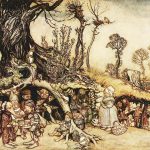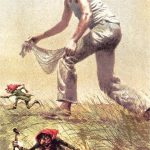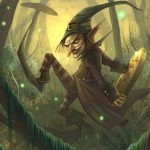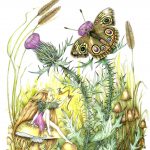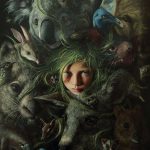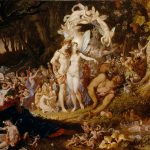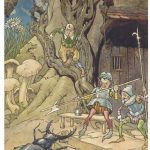In the time of the Medieval Fairy, the size and appearance of the fairy became quite variable. They could be tiny and beautiful or huge and monstrous. Most commonly, however, the Medieval Fairy was depicted as a fair-skinned maiden with flowing red hair.
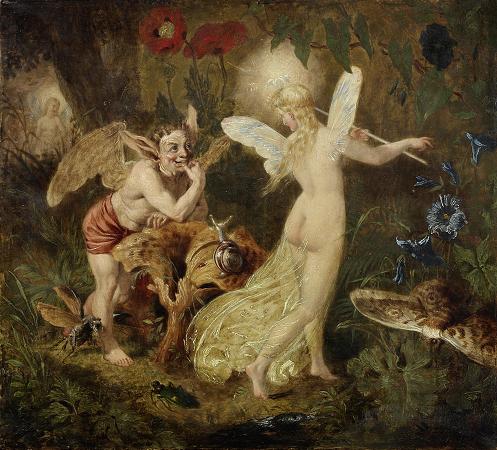
Despite their sometime mischievous nature, the Medieval Faeries were enamored with humans, and often mated with them. The children who were a natural result of these unions were often gifted with many of the powers of the fay.
“By the 13th century, the original context of Old English belief had become lost, and people were using the word ‘faery’ in various ways. Early fourteenth century English literature appears to distinguish fairies from dwarves (goblin-like entities who lived in burial mounds); from brownies or hobgoblins (who lived in houses near the hearth and performed domestic tasks); and from the fairy damsel or White Lady who was regarded as a benevolent guardian spirit or genius loci “(Pemberton 1997).
By the late 14th century, the traditional image of the modern fairy was born. The Diminutive Fairy became connected to death and the departed while the Literary Fairy forged a new mythology
The Diminutive Fairy was generally quite benign, but they were prone to some mischief. They mischief was usually confined to simple pranks and jokes, and it was considered rare indeed for a human to be harmed by a fairy.
The people of Ireland, Britain, and Scotland viewed the Diminutive Fairy with some admiration, but they were also wary of them. In the 14th and 15th centuries, the fairies were spoke on kindly, just in case the might be listening. The fairies were called the Gentry, the week folk, the Good Neighbors, and many other flattering names.

